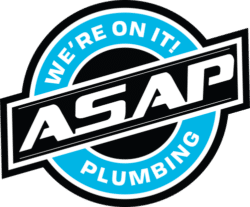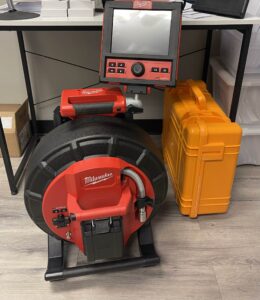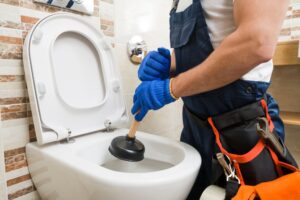Your sump pump plays a crucial role in keeping your home safe from water damage, particularly in areas prone to flooding or with high water tables. However, many homeowners overlook the importance of regular sump pump maintenance, specifically cleaning. Knowing how often you need to clean your sump pump can save you from costly repairs and even bigger issues down the road. In this post, we’ll guide you through the best practices for sump pump cleaning and highlight the importance of professional services to ensure the longevity and functionality of your system.
Why Sump Pump Cleaning Is Important
Sump pumps remove water from a sump basin, usually located in your basement or crawl space, and pump it outside to prevent flooding. Over time, dirt, debris, and sediment can accumulate in the sump pit, causing the pump to clog or malfunction. Regular cleaning ensures that your sump pump operates efficiently, reducing the risk of flooding and water damage in your home.
If left unchecked, a clogged or dirty sump pump may fail when you need it most, such as during heavy rains or rapid snowmelt. Additionally, improper sump pump maintenance can reduce efficiency, increasing your energy bills as the pump works harder than necessary.
How Often Should You Clean Your Sump Pump?
Frequency of Cleaning
Typically, homeowners should clean their sump pumps at least once a year. However, there are a few factors that can increase the need for more frequent cleaning:
- High Water Table: Homes in areas with high water tables may experience frequent sump pump activity, which can cause more dirt and debris to build up over time. In such cases, cleaning every three to six months is recommended.
- Heavy Rainfall or Flood-Prone Areas: If your home is in an area that experiences heavy rainfall or frequent flooding, more regular sump pump maintenance is essential. Checking the pump after a major storm or during rainy seasons ensures it’s working correctly.
- Older Sump Pumps: As sump pumps age, they become less efficient and more prone to clogging. If your pump is several years old, more frequent cleaning may be necessary to keep it functioning properly.
For those unsure about how frequently to clean their sump pump, this article offers some general maintenance tips and guidelines.
Steps for Sump Pump Cleaning
Cleaning a sump pump isn’t as simple as it may seem, especially if you’ve never done it before. Here’s a basic breakdown of the steps involved:
- Disconnect Power: Before doing any work on the sump pump, disconnect it from its power source to avoid electrical accidents.
- Remove the Pump: Carefully remove the pump from the sump basin. It may be heavy, and you may need help if it’s a larger unit.
- Clean the Sump Pit: Use a wet/dry vacuum or bucket to remove any debris, mud, and sediment from the sump pit. Cleaning the pit prevents the pump from becoming clogged in the future.
- Clean the Pump: Wipe down the pump’s exterior, making sure to remove any dirt or debris from the pump’s inlet screen or valve.
- Reassemble and Test: Once everything is cleaned, reassemble the pump and test it by pouring water into the pit to ensure it works correctly.
While these steps may seem straightforward, improper cleaning can cause damage to your sump pump, leading to costly repairs or replacements. That’s why professional sump pump cleaning services are highly recommended.
For more detailed steps on sump pump maintenance, this guide explains the process in depth.
Benefits of Professional Sump Pump Cleaning
Although DIY sump pump cleaning is an option, hiring a professional service like ASAP Plumbing Arizona ensures the job is done thoroughly and safely. Here are some benefits of opting for professional cleaning services:
- Expert Knowledge: Professionals have the expertise to identify and address potential issues before they become major problems. They can assess the overall condition of your pump and recommend repairs or replacements if necessary.
- Thorough Cleaning: Professional cleaners can access and clean parts of the pump that may be difficult for the average homeowner to reach, ensuring that every aspect of the pump is functioning optimally.
- Safety Assurance: Sump pumps are connected to electrical outlets, and improper handling can result in electrical hazards. Professional services eliminate this risk, as trained technicians know how to clean and maintain sump pumps safely.
- Maintenance Scheduling: Professionals provide regular maintenance schedules to ensure that your sump pump is always ready to perform its job. You don’t have to worry about remembering to clean the pump, as your service provider will remind you when it’s time for a check-up.
Additional Maintenance Tips
Besides cleaning your sump pump regularly, here are some additional maintenance tips to keep it in peak condition:
- Check the Power Source: Make sure your sump pump is properly connected to a power source and has a backup power option in case of outages.
- Test Your Pump Regularly: Pour water into the sump pit every few months to ensure the pump activates and drains the water properly.
- Inspect the Discharge Line: Ensure that the discharge pipe is clear and directs water away from your home to prevent backflow or flooding.
By following these tips, you can extend the lifespan of your sump pump and protect your home from potential water damage.
ASAP Plumbing Arizona, Serving Arizona
For expert sump pump cleaning and maintenance, contact ASAP Plumbing Arizona. We proudly serve homeowners throughout Arizona with reliable plumbing services to ensure your sump pump operates at its best year-round. Don’t wait until disaster strikes—schedule your professional sump pump cleaning today.









